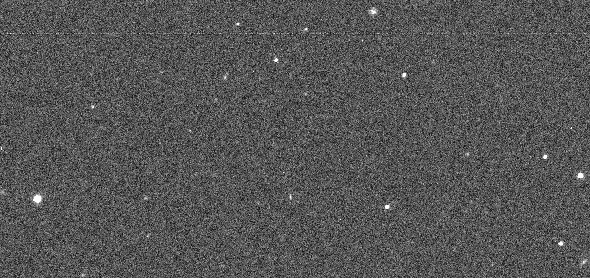

What is the "Data Storage and Processing Center of Gaia-GBOT" ?
The "Data Storage and Processing Center of Gaia-GBOT" is a sub-group of GBOT's members in charge of the development of the future GBOT DataBase and the images reduction programs specially adapted for tracking moving objects with the use of CCD detectors and able to reach the high level of astrometric precision required for GBOT and described above. It is a scientific service of SyRTE Division of Paris Observatory.What is "Gaia-GBOT" ?
Gaia-GBOT (Gaia Ground Based Optical Tracking) is a part of the "Data Processing and Analysis Consortium", the large consortium of over 400 scientists
from many European countries, responsible for the scientific conduction of the Gaia mission by ESA. The GBOT group is in charge of the optical
tracking of the Gaia satellite itself. It is necessary to track position and motion of the Gaia satellite to fully reach its goal in terms of astrometric precision level
(primarily to correct for the effects of relativistic aberration and for the precise determination of parallaxes of solar system objects). The required precision cannot be
reached using the standard procedures alone, i.e. by a single ranging and communications station. These observations will be done daily, during the 5 years of
the mission, with the use of optical CCD frames taken by a small network of 1-2 m class telescopes located all over the world. The requirements for the
accuracy on the satellite position determination, with respect of the stars in the field of view, is 20 mas (corresponding to 150 meters at the distance to
Gaia). Note that the full level of accuracy that is required for GBOT can only be reached, once we are able to use the first data from Gaia itself, available
about 1.5-2 years after mission start (which is even then much more accurate than anything available today) as a reference catalog, meaning that all
observation obtained till then need to be rereduced."Why Gaia needs GBOT
Gaia's unprecedented ambitions regarding astrometric accuracy and precision require a level of knowledge of the position and velocity vector of the satellite itself not required in other satellite mission. Thus the usual methods of determining these quantities do not suffice and new approaches must be invoked. One of these is the Ground Based Optical Tracking (GBOT) campaign. There are two main reasons for these high precision needs:1. Global astrometry is severely affected by aberration, caused by the finite nature of the speed of light and the transversal movement of the observer (caused by Earth's rotation and orbital movement around the Sun and in the case of Gaia the satelitte's orbital motion, etc.). This is a large effect, which means that in order to correct for aberration in the precision regime of Gaia (i.e. a few microarcseconds), the motion of the detector and hence the satellite must be known to very great precision. The resulting tolerance in Gaia's velocity vector is 2.5 mm/s.
2. Apart from stars, Gaia will also measure faint Solar System objects. These are several orders of magnitude closer than even the closest stars, their distances being comparable to Earth's distance to the Sun. Errors in the baseline therefore have a far larger effect on the precision of the parallax of an asteroid than they have on stars, meaning that if Gaia is to measure sufficiently precise parallaxes to these objects, the 3D position of Gaia itself needs to be known to about 150 m.
Unfortunately the ranging of one radar-tracking station can only deliver 2000 m in position and 10 mm/s (75 m, 1 mm/s in radial direction). This means that additional measures need to be taken to ensure Gaia's aims. There are several approaches to accomplish this, one of them being GBOT.
GBOT consists of a network of a small number of telescopes distributed worldwide, and is committed to deliver positions of Gaia on a daily basis. Since all current reference catalogues are not precise enough to reach such a level of precision, GBOT's astrometry will initially have significantly higher errors, about 50 mas. Only after the first release of Gaia astrometry (which will be approximately 2 years after launch) we will be able to reach our aims, meaning that the analysis of all data obtained before will have to be repeated using Gaia as reference catalog in order to meet the requirements.










